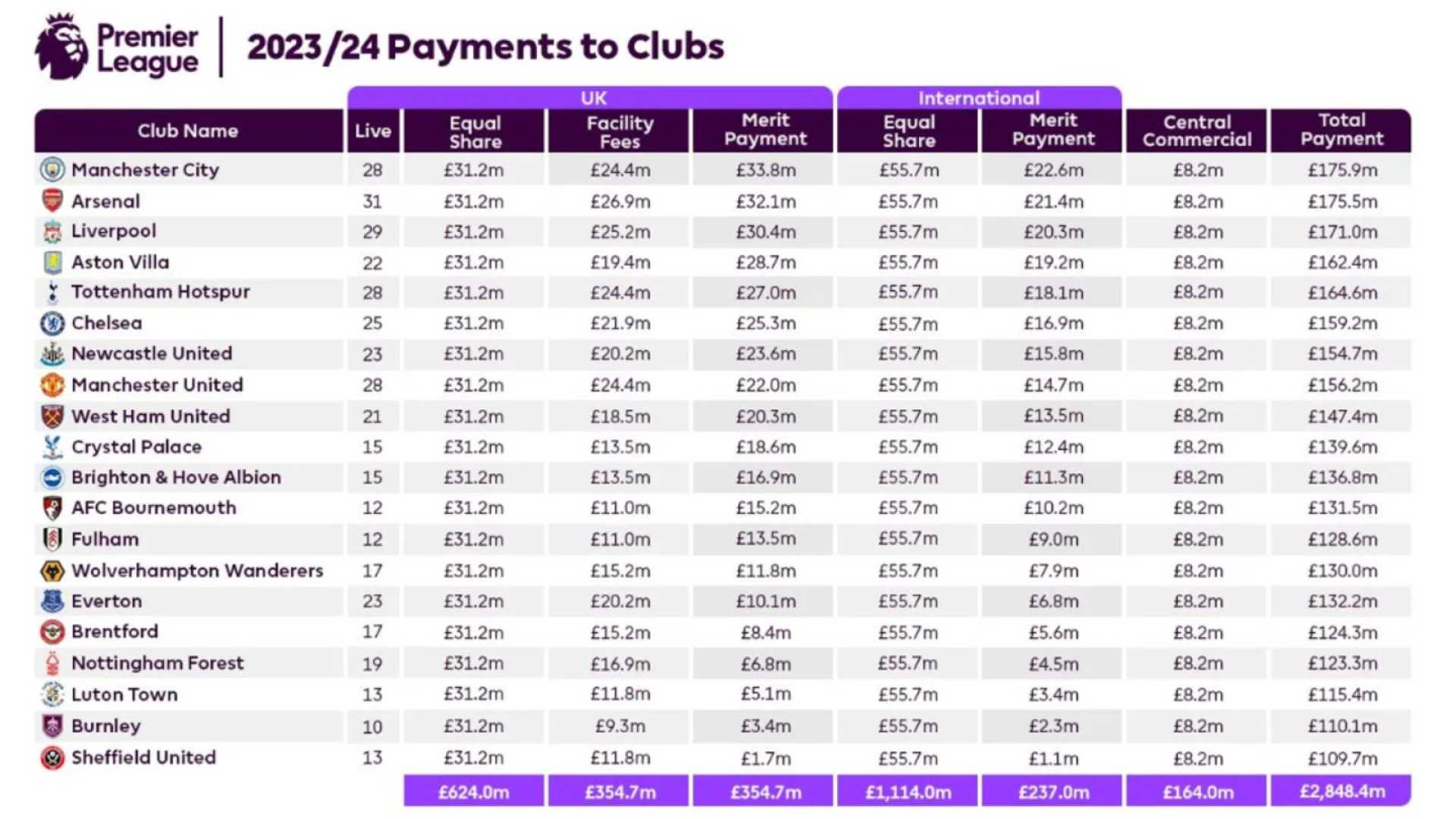Sports
Premier League Clubs Face Financial Stakes as Season Nears End

LONDON, England — As the Premier League season heads into its final stretch, the stakes have never been higher for clubs vying for lucrative financial rewards. With one trophy on the line, positioning in the league can dictate millions of pounds in earnings, showcasing why every match result counts.
Last season, Premier League teams received payments ranging from £175.9 million to £109.7 million. These figures stem from league standings, broadcast deals, and shared commercial revenues, among other financial dynamics. Although payouts for the 2024-25 season won’t be finalized until the end of the campaign, last year’s data provides insight into the potential earnings for the current season.
Currently dominating the league, Liverpool stands to benefit significantly. While they are set to celebrate as champions, Fenway Sports Group (FSG)—the club’s ownership group—might be more focused on the financial implications of their title win. Last year, Manchester City secured £56.4 million in merit payments, a figure Liverpool can reasonably expect to match.
In addition to merit payments, City received £86.9 million from equal share payments related to broadcast rights and an additional £24.4 million based on the number of matches shown on UK television. Totaling these amounts, Manchester City earned £175.9 million, the highest payout of any club last season.
Winning the league also guarantees access to the next season’s Champions League, estimated to be worth £15.7 million, in addition to £1.8 million for each match win in the group stage. This incentive reinforces the idea that finishing at the top is pivotal—unless clubs secure spots in the Champions League qualification brackets (first to fourth or fifth), where rewards remain generous.
Even teams finishing behind City in rewards were in robust financial positions. Arsenal, for example, received £175.5 million, just shy of City’s total, with £26.9 million coming from facility fees—more than City’s £24.4 million. Liverpool’s third-place finish yielded them £171 million and tellingly, they too benefitted from higher facility fees than City.
Aston Villa, which secured Europe’s last Champions League spot, collected £162.4 million, a number that is comparatively modest given their successful continental efforts. Villa’s participation in this season’s Champions League reportedly adds an estimated £40 million to their finances.
This trend can also be seen at clubs like Nottingham Forest, which transitioned from battling relegation last season to competing for a Champions League position this time around. Forest earned £123.3 million from a 17th place finish in 2023-24. The stakes this time are significantly higher as they chase an additional £40 million to £60 million by cracking the top five.
Meanwhile, Tottenham Hotspur’s fifth-place finish allowed them to qualify for the Europa League, enabling them to earn £164.4 million. Interestingly, Spurs’ total exceeded that of Aston Villa, despite the latter qualifying for the Champions League, thanks to Spurs’ higher broadcast revenues.
In contrast, Manchester United, despite a disappointing eighth-place finish, qualified for the Europa League via the FA Cup, bringing their earnings to £156.2 million. Chelsea, finishing sixth, reports total payments of £159.2 million, while Newcastle United, surprisingly, made £154.7 million without European qualification.
The difference in league standings illustrates the monetary prowess of the Premier League, where mid-tier placements yield unexpectedly high rewards. For instance, ninth-place West Ham earned £147.4 million, while Crystal Palace in 10th claimed £139.6 million. The gap, primarily influenced by facility fees, further emphasizes how key broadcast deals can significantly alter club fortunes.
As the ongoing season progresses, the competition remains fierce among numerous Premier League clubs racing for Champions League, Europa League, and Conference League qualifications. Historical giants like Manchester United and Tottenham face the challenge of a disruptive campaign that may flout their traditional earning potential. Conversely, relegation-threatened teams such as Southampton and Leicester City will prepare for financial implications stemming from their performance, albeit cushioned by relegation payments and other fiscal mechanisms.
Ultimately, last season witnessed bottom-placed clubs Sheffield United, Burnley, and Luton Town receiving £109.7 million, £110.1 million, and £115.4 million, respectively. Everton, finishing 15th, earned £20.2 million in facility fees, outperforming six other clubs above them in the standings—all pointing to the financial heft the Premier League holds.












